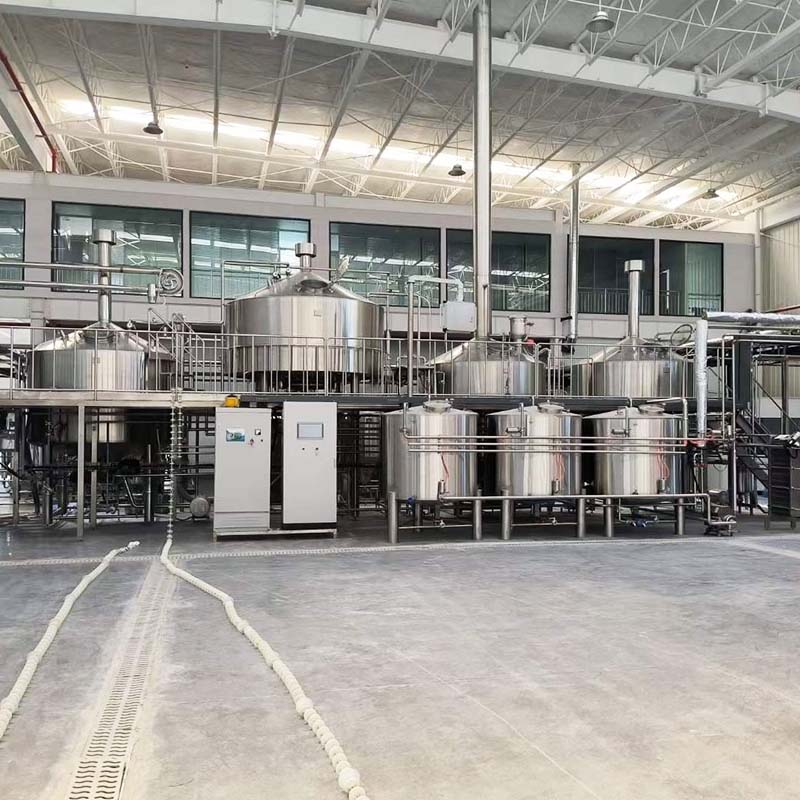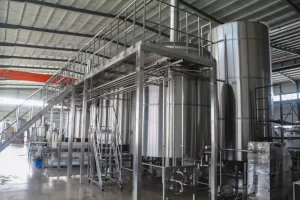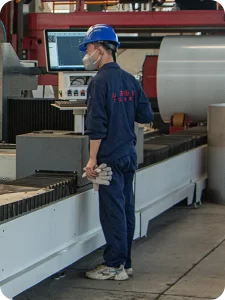How to Choose Good Large Brewery Equipment
Selecting the right large brewery equipment is crucial for the success of any brewing operation. Whether you are starting a new brewery or expanding an existing one, investing in high-quality brew equipment can significantly impact your production efficiency, product quality, and overall profitability. This guide will help you navigate the complex landscape of brewery equipment and make informed decisions tailored to your specific needs.

Understanding Your Brewing Needs
Before diving into the specifics of brew systems, it’s essential to evaluate your brewing needs. Consider factors such as the scale of your operation, the types of beer you want to produce, and your budget. This initial assessment will guide you in selecting the right brew equipment.
1. Scale of Operation
Determine whether you are running a microbrewery, a craft brewery, or a large-scale production facility. Each type of brewery has different requirements for brew equipment:
- Microbreweries typically use smaller systems and focus on craft beer.
- Craft breweries may operate on a medium scale often offering a diverse range of beers.
- Large breweries require extensive and highly automated systems (50 barrels and above) to meet significant production demands.
Understanding your scale helps in choosing the appropriate brewery equipment that aligns with your production goals.
2. Types of Beer
The styles of beer you intend to brew also influence your equipment selection. Some types of beer may require specific brewing techniques or processes. For instance, if you plan to produce lagers, you might need fermentation tanks with temperature control features. If you’re focusing on IPAs, you may want equipment that allows for dry hopping. Be sure to communicate your brewing goals to suppliers when assessing different brew systems.
3. Budget
Budget constraints can significantly affect your choices. While it’s tempting to opt for the cheapest options, it’s crucial to strike a balance between cost and quality. Investing in high-quality brewery equipment may result in long-term savings through reduced maintenance costs and improved efficiency.
Key Components of Brewery Equipment
Once you have a clear understanding of your brewing needs, it’s time to explore the specific components of a brew system. Here are some essential pieces of brewery equipment you should consider:
1. Brewhouse
The brewhouse is the heart of any brewery, where the magic of brewing happens. It typically includes:
- Mash Tun: This vessel is where the malt is mixed with water to extract sugars.
- Lauter Tun: After mashing, the wort is separated from the grains in this vessel.
- Kettle: This is where the wort is boiled, and hops are added for flavor and aroma.
Investing in a high-quality brewhouse is essential for producing consistent beer. Look for systems that allow for flexibility in brewing techniques, such as step mashing or decoction.
2. Fermentation Tanks
Fermentation tanks are where yeast is added to the wort to convert sugars into alcohol and carbon dioxide. When choosing fermentation tanks, consider:
- Material: 304 Stainless steel is the preferred choice for its durability and ease of cleaning.
- Size and Shape: Cylindrical conical fermenters (CCFs) are commonly used because they allow for better yeast management and easier cleaning.
- Temperature Control: Look for tanks equipped with jackets for temperature regulation, as temperature management is crucial for fermentation.
3. Conditioning Tanks
After fermentation, beer needs to mature in conditioning tanks. This stage can significantly affect the flavor and clarity of the final product. Look for tanks that allow for cold crashing and other conditioning techniques to enhance your beer’s quality.
4. Packaging Equipment
Once your beer is ready, you need efficient packaging equipment. This can include:
- Kegging Lines: For filling kegs quickly and efficiently.
- Canning Lines: If you plan to offer your beer in cans, look for systems that can handle different sizes and formats.
- Bottling Lines: For those who prefer glass bottles, an automated bottling line can save time and reduce labor costs.
Investing in reliable packaging equipment ensures that your beer reaches customers in optimal condition.

Automation and Technology
In recent years, brewery equipment has become increasingly automated, allowing for greater efficiency and consistency. Consider the following technological advancements when selecting your brew system:
1. Automated Control Systems
Modern brew equipment often comes with automated control systems that help monitor and adjust various parameters such as temperature, pressure, and flow rates. These systems can reduce the need for manual intervention, allowing your team to focus on other critical tasks.
2. Sensor Technology
Advanced sensor technology can provide real-time data about your brewing process, enabling you to make informed decisions. This data can help you identify potential issues before they become major problems, ensuring a smoother operation.
3. Integration with Management Software
Some breweries invest in software solutions that integrate with their brewing equipment. This software can help track inventory, manage production schedules, and analyze sales data, providing valuable insights into your operations.

Choosing the Right Supplier
Selecting a reputable supplier is as important as choosing the right brewery equipment. A good supplier can provide valuable support throughout the purchasing process and beyond. Here are some factors to consider when evaluating suppliers:
1. Experience and Reputation
Look for suppliers with a proven track record in the brewing industry. Read reviews, request references, and ask about their experience with similar breweries. An established supplier is more likely to understand your needs and provide reliable solutions.
2. After-Sales Support
Good after-sales support is critical for minimizing downtime and ensuring your equipment operates efficiently. Inquire about warranty options, maintenance services, and access to replacement parts.
3. Customization Options
Every brewery is unique, so it’s beneficial to choose a supplier that offers customizable brew systems. This flexibility allows you to tailor the equipment to meet your specific production needs and goals.
Maintenance and Upkeep
Once you have invested in your large brewery equipment, regular maintenance is essential to ensure longevity and optimal performance. Consider the following maintenance practices:
1. Regular Cleaning
Sanitation is paramount in brewing. Establish a regular cleaning schedule for all equipment, including fermentation tanks, brew kettles, and piping. Many suppliers provide guidelines for proper cleaning procedures.
2. Scheduled Inspections
Conduct regular inspections of your equipment to identify any wear and tear or potential issues. This proactive approach can help you address problems before they escalate, reducing costly downtime.
3. Staff Training
Invest in training your staff on proper equipment handling and maintenance procedures. Well-trained employees can significantly extend the lifespan of your brewery equipment and improve overall efficiency.
Conclusion
Choosing the right large brewery equipment is a complex but essential process that requires careful consideration of your specific brewing needs, budget, and long-term goals. By understanding the key components of a brew system and selecting a reputable supplier, you can ensure that your investment pays off in the form of high-quality beer and a successful brewing operation.
In this ever-evolving industry, staying informed about technological advancements and best practices will empower you to make better decisions. With the right brew equipment, you’ll be well on your way to creating exceptional beers that stand out in the marketplace.
Related recommendations
Beer Equipment Costs: Small vs. Large Brewery Analysis
302Compare beer equipment costs for small vs. large breweries. Learn about brewery investment, operating expenses, and scaling strategies.
View detailsThe Role of Fermentation Vessel in Crafting the Perfect Beer
255When it comes to brewing exceptional beer, the fermentation vessel is an unsung hero. This critical piece of equipment not only houses the magic of yeast converting sugars into alcohol but also influences flavor, clarity, and consiste...
View detailsBeer Equipment Control Systems: Revolutionize Your Brewing Process
186Boost brewing efficiency with Tonsen's Beer Equipment Control Systems. Automate, monitor, and optimize for quality and cost savings.
View details
 Shandong Tonsenbrew Co., Ltd.
Shandong Tonsenbrew Co., Ltd.





HelloPlease log in